Ever feel like you're on a bouncy castle while driving? Your car might be trying to tell you something about its suspension. Ignoring a worn suspension system isn't just about an uncomfortable ride; it's about safety, too. When your car's suspension is on the fritz, there are a few key things you need to keep an eye on.
First off, it's essential to understand that your car's suspension is more than just springs and shocks. It's the whole system that impacts how your car grips the road, handles bumps, and corners smoothly. So when something starts to wear out, you're not just risking a jolt every time you hit a pothole; your car's stability is on the line.
Think about it: worn suspension parts can lead to uneven tire wear, causing your tires to wear out faster and possibly leading to dangerous situations like blowouts. Plus, all those extra vibrations can wreak havoc on other car parts, leading to a series of repairs.
- Understanding Car Suspension
- Symptoms of Worn Suspension
- Why Driving with Worn Suspension is Risky
- The Impact on Ride Comfort
- When to Seek Professional Help
- DIY Inspection Tips
Understanding Car Suspension
Alright, let’s break down what suspension is and why it's a big deal in the world of cars. Imagine your car's suspension as the unsung hero of your vehicle. It doesn't just keep your ride smooth; it's all about safety and control too. It's a complex system of springs, shocks, struts, and linkages that connect a vehicle to its wheels, allowing relative motion between them.
You know those bumpy roads or sharp turns that make you grip the wheel a little tighter? That's where your suspension comes in. Its main job is to provide maximum tire contact with the road surface, which translates into better grip and steering stability. The moment your car glides over a bump or takes a hard turn, the suspension absorbs the shock, so you don’t bounce around like you're at an amusement park.
Now, let's get into the nitty-gritty. Most cars roll off the assembly line sporting either a strut-based or a coil spring-based suspension system. Here’s how they play their parts:
- Struts: These support the weight of the vehicle while maintaining alignment. They're basically a damper with extra structural strength, combining a shock absorber with some load-bearing capabilities.
- Shocks: These control the bounce caused by springs and bumps, making sure your car doesn't skid off the road.
- Springs: Whether they’re coil, leaf, or torsion bars, springs take on the weight and compress during impacts, enhancing comfort.
When these parts start to wear out, things can go awry. Bad suspension isn't just about comfort; it threatens the driving safety you've come to rely on. Feeling every crack in the road is one clue that something might be amiss.
Did you know? Correctly functioning suspension parts can improve your brake's effectiveness by ensuring all tires remain in contact with the road, which is crucial for stopping performance. If you're skidding, your brakes aren't working at their best, which can be a huge issue if you need to come to a quick stop.
Symptoms of Worn Suspension
Not feeling that smooth ride you once did? It might be your car's way of suggesting a suspension check-up. Recognizing the signs of a worn suspension early on can save you from more extensive repairs down the road. Here are some telltale symptoms to watch for:
1. Unusual Noises: If you hear clunking, knocking, or squeaking noises, especially when going over bumps, that's a red flag. Those sounds often mean suspension parts have worn down.
2. Uneven Tire Wear: Have you noticed that your tires are wearing out more on one side? This could be due to a suspension issue throwing off the alignment, which puts extra pressure on certain areas.
3. Excessive Bouncing: Your car should settle quickly after hitting a bump. If it keeps bouncing like an overexcited puppy, your shocks or struts might be past their prime.
4. Poor Handling: Struggling to keep your car steady on turns? Or does it sway more than usual? That's a classic sign that your suspension isn’t keeping up.
5. Low Riding: Is one corner of your car sitting lower than the others? This could indicate a damaged spring or another suspension problem, requiring immediate attention.
6. Steering Problems: If turning the wheel feels loose or overly stiff, don't ignore it. This issue often points to suspension trouble.
Feeling adventurous? Try the bounce test. Push down hard on each corner of your car. If it bounces more than twice before settling, it's time to call in the pros. Stay alert to these symptoms to keep your ride comfy and safe. Missing early signs could mean bigger headaches later on. So, it’s best to listen when your car starts talking back!
Why Driving with Worn Suspension is Risky
So, you're thinking it's just another car part, and maybe you've been putting off dealing with your worn suspension. But here's the thing: it's way riskier than you might think. Let's dig into the specifics.
First up, handling. Your suspension system plays a huge role in how well your car grips the road. When parts wear out, like the shocks or struts, your car's stability takes a hit. Imagine trying to control a shopping cart with a wobbly wheel; the same chaos can happen but at 60 mph. Not cool, right?
Next, there's the safety angle. Worn suspension can lead to increased stopping distances. Those extra few feet can be the difference between a close call and a collision. Your car's brakes work most effectively when all parts, including the suspension, are in tip-top shape.
Now, think about the wear and tear: uneven tire wear is a classic sign of suspension trouble. You might notice one side wearing out faster than the other. This doesn't just mean you'll need to replace your tires sooner; it also can lead to a dangerous blowout while driving.
Here's a quick reality check with some numbers:
| Component | Average Wear Replacement Cost |
|---|---|
| Shock Absorbers | $150 - $300 each |
| Struts | $450 - $900 each |
| Alignment Problems | $75 - $100 |
Factor these costs into the mix, and it's clear that addressing suspension issues can save you bucks down the line. Not to mention, your safety is priceless.
So, if you notice your car bouncing more than usual or those tires looking a little ragged on one side, it's a hint. Listen to it. Catch things early by getting a professional check-up. That way, you'll avoid turning one small issue into a bunch of big ones.
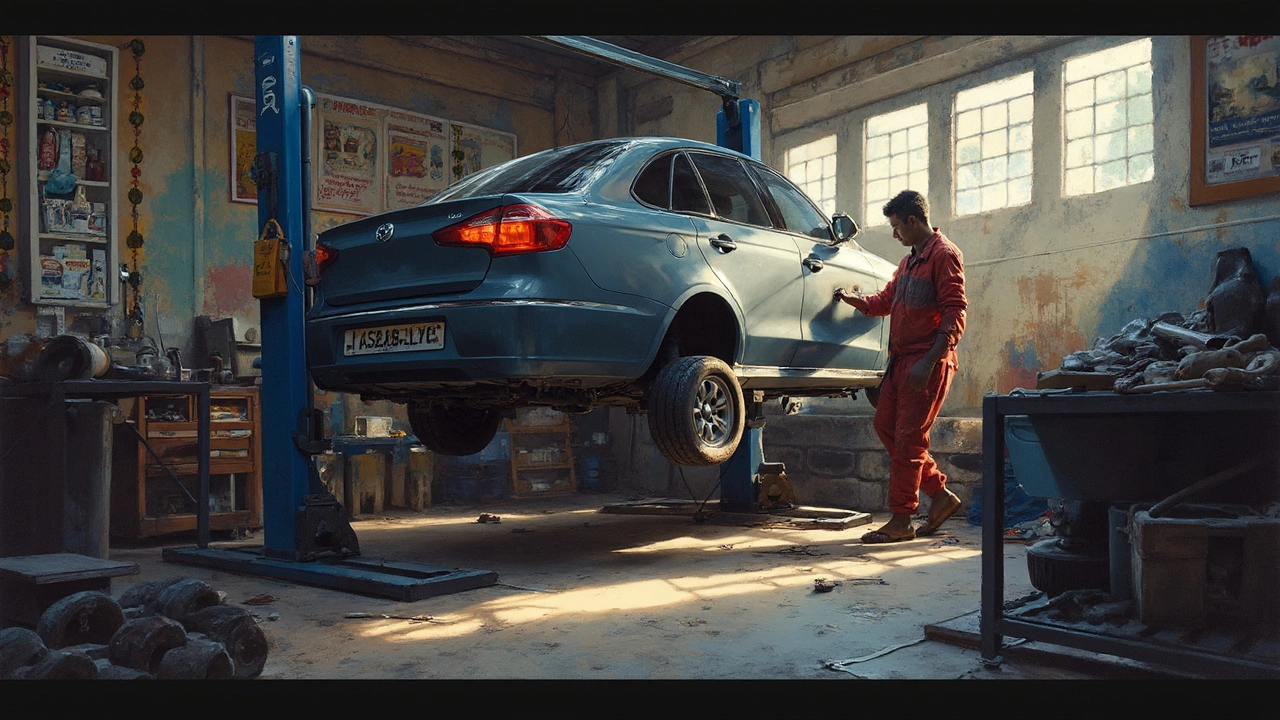
The Impact on Ride Comfort
Have you ever felt like you're riding a roller coaster when you're just driving down a city street? That jarring feeling might be your car's way of screaming for help. With a worn suspension, your car struggles to keep everything smooth and steady, and you end up feeling every tiny bump and dip in the road.
Your car's suspension system is like a hidden hero, working hard to keep your ride pleasant by absorbing shocks and vibrations. When it starts to wear out, you'll notice more than just a rough ride. You might start sliding around in your seat during sharp turns, and that's a clear sign your suspension isn't holding its weight. A proper suspension handles bumps softly, helping keep your tires glued to the road. If it’s not, well, things get bumpy—and not in a fun way.
Another often overlooked aspect is how a bad suspension can make driving a physical chore. Imagine going for a long drive and feeling like you’ve been in the gym squatting weights. That’s the kind of strain you don’t want from your daily commute.
There's a reason vehicles are tested rigorously for ride quality before they hit the market. Automotive engineers tune suspensions to deliver the right balance between comfort and control. A worn suspension throws this balance off, and no one wants to endure an uncomfortable vibration-fest just because they skipped a maintenance check.
Though it might seem okay to delay getting repairs, remember that you're trading comfort and safety for immediate convenience. An ill-functioning suspension can play a part in reducing your vehicle’s lifespan too, leading to an early retirement or even mechanical failures you'll regret later.
When to Seek Professional Help
You might be the DIY type, but with a worn suspension, there's a point where calling in a pro is just smart. So, how do you know when it's time to make that call? Well, here are some signs you definitely shouldn't ignore.
First, if you're hearing weird noises like clunks or squeaks each time you hit a bump, that’s a big red flag. Such sounds usually point to trouble in the suspension parts, like shocks or struts that have seen better days. Those parts are crucial for stability, so don’t wait around feeling like you're in a maraca.
Another sign is uneven tire wear. If one side of your tire tread is looking shabby while the other seems decent, it could mean your suspension isn’t distributing weight properly. This can eat away at your tires and your bank balance quicker than you might think.
And don't underestimate the importance of your car pulling to one side. This isn’t just annoying; it’s dangerous. Faulty suspension can mess with your car’s alignment, making it tough to maintain a straight path.
Finally, if you experience poor control and handling, especially during turns or quick maneuvers, it's time for a pro to step in. Sometimes it’s tempting to chalk these up to road conditions or tire issues, but persistent problems often mean your suspension needs a check-up.
If you're still on the fence, remember that professional mechanics have the tools and expertise to pinpoint and fix suspension issues accurately, helping you avoid costly repairs down the road. Their trained eye can spot problems you might miss.
Put simply, when your driving safety and comfort are in question, seeking professional help isn’t just a good idea—it's necessary.
DIY Inspection Tips
Want to avoid costly repairs and keep your car in top shape? You can do a quick suspension check yourself. It's not rocket science, and you don't need a bunch of fancy tools. Just a bit of time, attention to detail, and some common sense. Let's break down the steps for a basic inspection.
Start by taking a close look at your worn suspension. Are there any visible signs of damage, like cracks or leaks around the shocks or struts? Give the car a little bounce test. Push down hard on each corner of the car. If it bounces more than twice, your suspension might be saying it's had enough.
- Tire Check: Spin each tire to look for any odd patterns or uneven tire wear. Weird patterns can hint at a suspension issue or alignment problem.
- Inspect the Bushings: These little cushiony parts can wear out, causing squeaky noises. If they're cracked or missing, it's time to replace them.
- Listen Carefully: While driving, pay attention for clunks or rattles when going over bumps. These noises can be a telltale sign of trouble.
- Visual Inspection: Get under the car safely and inspect the coil springs. Look for any signs of rust or damage. A broken spring won't just affect your ride comfort; it's a hazard.
According to a quote from the folks at Car Care Council,
"Paying attention to early warning symptoms and taking action can save money and keep your car safe and reliable."Sounds like smart advice, right?
Also, a quick look at your car manual can provide insight into how often your suspension should be checked and what specific signs to look for in your model. Remember, though, if you're unsure about anything or the ride's still wobbly, consulting a pro is never a bad idea.

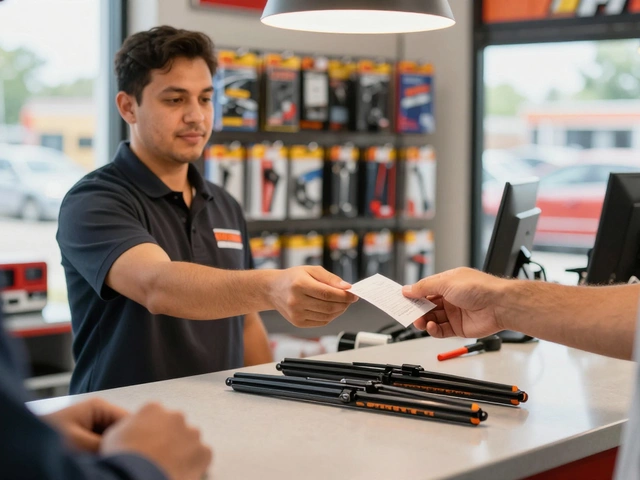

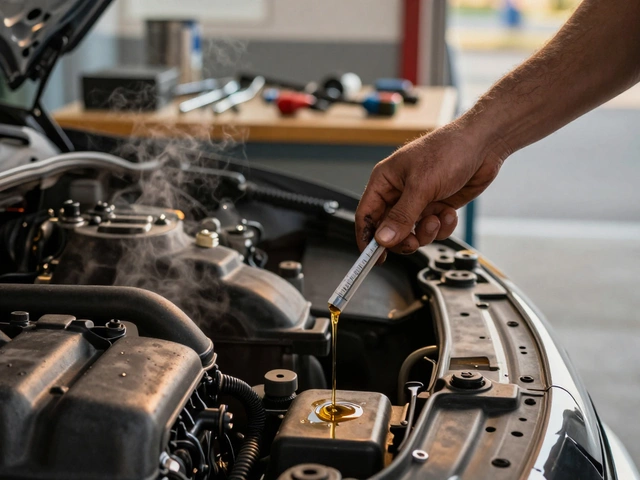
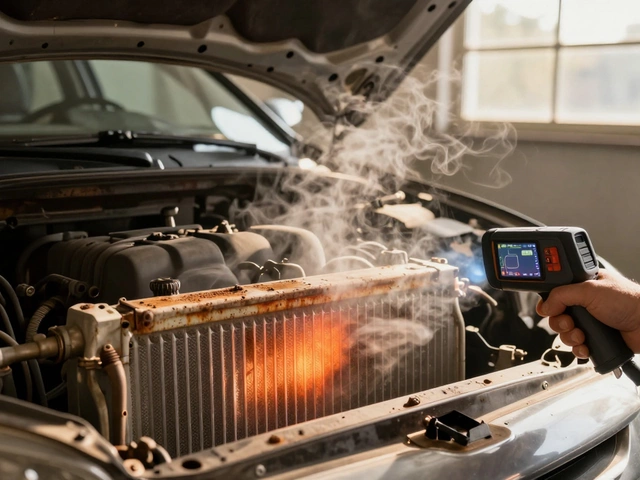
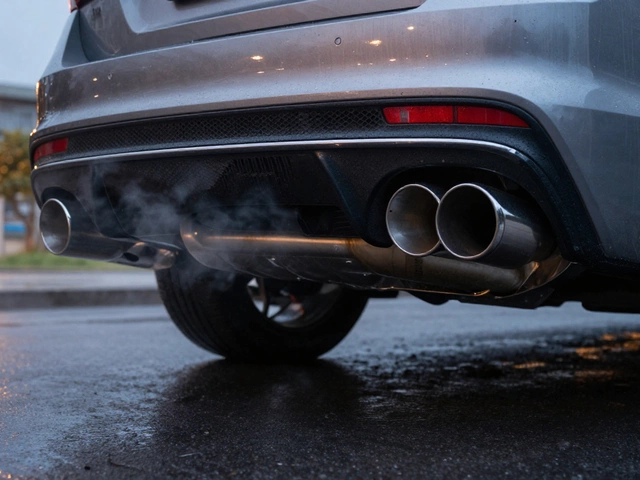





Write a comment